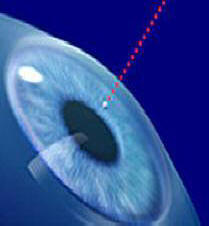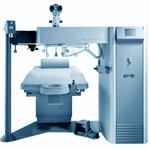|
|
| |
|
 |
Intralase All Laser LASIK |
Dr. Sanford Feldman , at One to One LASIK in San
Diego , is proud to be among the first LASIK surgeons in San Diego
to offer " all laser " or " bladeless " LASIK featuring Intralase
technology. LASIK involves three basic steps. The first is to create
a paper-thin flap of tissue on the front surface of the eye, or
cornea. The second is to reshape the underlying layers of the cornea
using laser light. Finally, the flap is then laid back down where it
seals itself into place within minutes, without stitches. It's as if
the cover of a book was being opened, some pages were being removed,
and the cover was then being laid back down.
Traditionally, the LASIK flap has been created with tremendous
precision using an automated device called a "microkeratome" which
uses a tiny, microscopically polished, oscillating surgical blade.
Now, one of the latest advances in LASIK technology called Intralase,
all laser LASIK or "bladeless LASIK" , allows Dr. Feldman to create
the LASIK flap using only laser light, and no surgical blade at all. |
| Intralase all laser
LASIK technology is ideal for patients who want the least invasive
technology available for LASIK . Because Intralase all laser LASIK
allows Dr. Feldman to make thinner flaps, it may be well suited to
patients whose corneas are determined to be too thin for the
conventional microkeratome approach. Early research studies suggest
that the precise, smooth flaps created by Intralase all laser LASIK
may help patients to achieve better vision as well. During your free
consultation at One to One LASIK , Dr. Feldman can determine whether
Intralase all laser LASIK technology would be appropriate to
consider for yourspecialvision needs. Please call One to One
LASIK in San Diego at 858 273-0200 to schedule your free hour-long
consultation with Dr. Sanford Feldman . |
 |
With Intralase all laser LASIK technology, the
surgical blade is replaced by a particular laser, called a "
femtosecond laser ." The femtosecond laser painlessly delivers a
highly focused beam of laser light to the cornea at a very precise
depth. A layer of harmless gas bubbles forms at that depth. As they
form, these microscopic gas bubbles gently separate the tissues just
above them from those just below. This plane of separation forms the
LASIK flap, which can then be lifted without any "cutting" at all. |
Intralase (all laser) LASIK uses laser
light instead of a surgical blade to create the LASIK
"flap." Laser light is precisely focussed at the desired
level below the surface of the cornea (the clear front
window of the eye).
The laser causes a microscopic gas bubble to form at
that level which separates the tissues just above and
just below. By laying down a full layer of these
bubbles, a separation is made within the substance of
the cornea without cutting the tissue. The tissue layers
above this plane of separation form the LASIK "flap"
which is then lifted. Beneath the flap, a second type of
laser re-shapes the cornea to change its focussing
power. |
|
 |
|
|